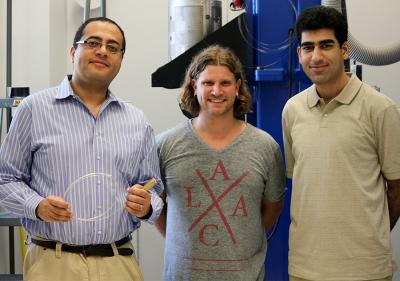A failed experiment by a student from the University of Central Florida has led to a pleasant discovery that is being considered by some scientists as a breakthrough in mass nanoparticle production with implications for pharmaceutical production and delivery.
 UCF student Soroush Shabahang whose failed experiment led o a breakthrough in nanoparticle production
UCF student Soroush Shabahang whose failed experiment led o a breakthrough in nanoparticle production
CREOL (The College of Optics & Photonics) graduate student, Soroush Shabahang is credited with the discovery which involves the use of heat to create miniature spheres of uniform dimensions from thin, long fibers. The technique, which is chemical-free can be employed to create large quantities of identical particles of any dimension. The applications of such particles are numerous.
Shabahang and his partner were working on a project to enhance the purity of glass fibers to facilitate quicker and interruption-free propagation of digital information or light. They were attempting to make the center of the cable thinner on a homemade tapering machine by heating and stretching the fiber. Instead of the desired thinning, the fiber broke into tiny spheres. This phenomenon is in line with the process of Rayleigh instability that explains the breaking of a falling fluid stream into droplets. Shabahang’s mentor at MIT, Ayman Abouraddy realized that the failed experiment was actually a breakthrough. The particles produced are capable of holding various types of materials locked in. This was demonstrated by Shabahang. The particles can be used to deliver a combination of different tumor treating agents and can even be integrated with a time-release component.